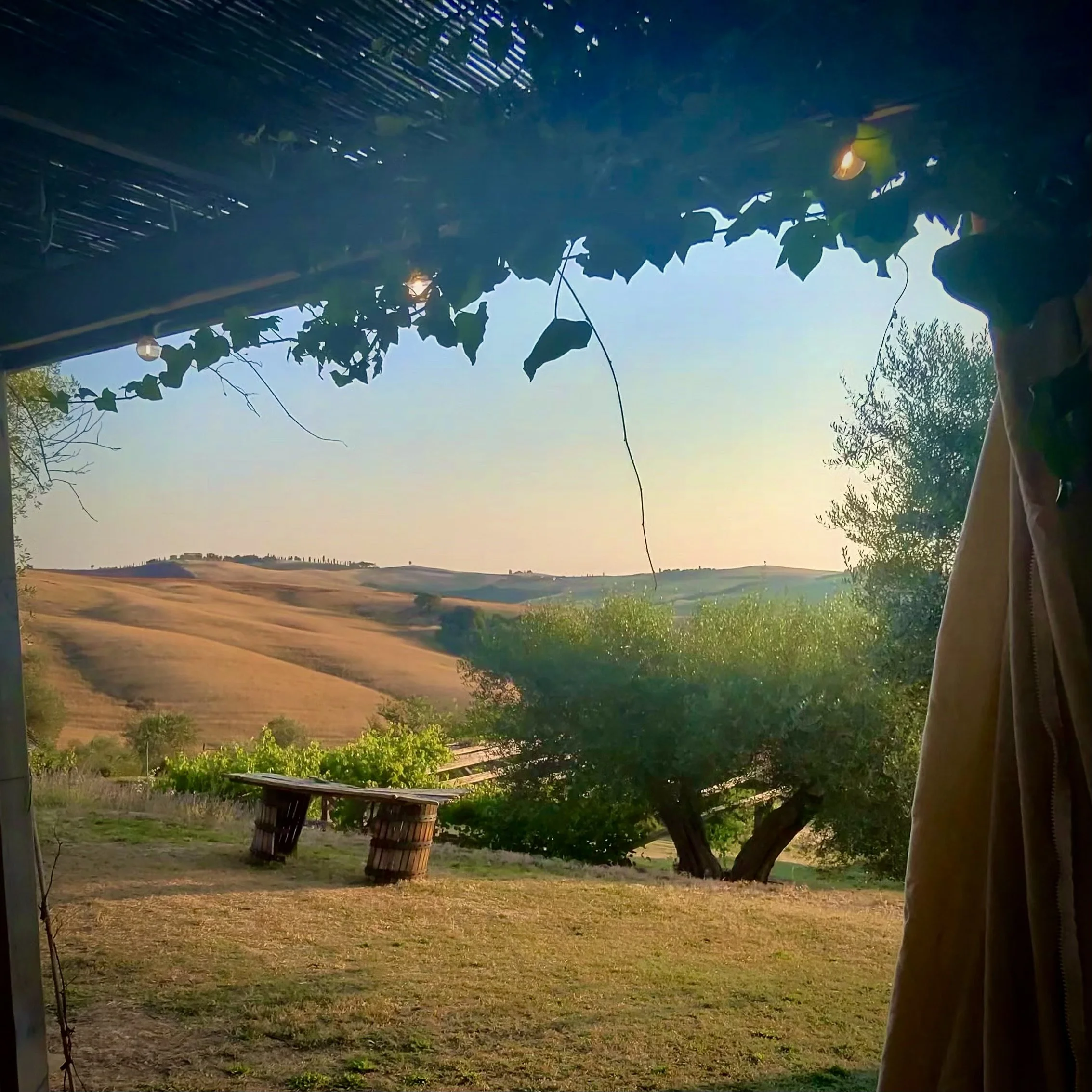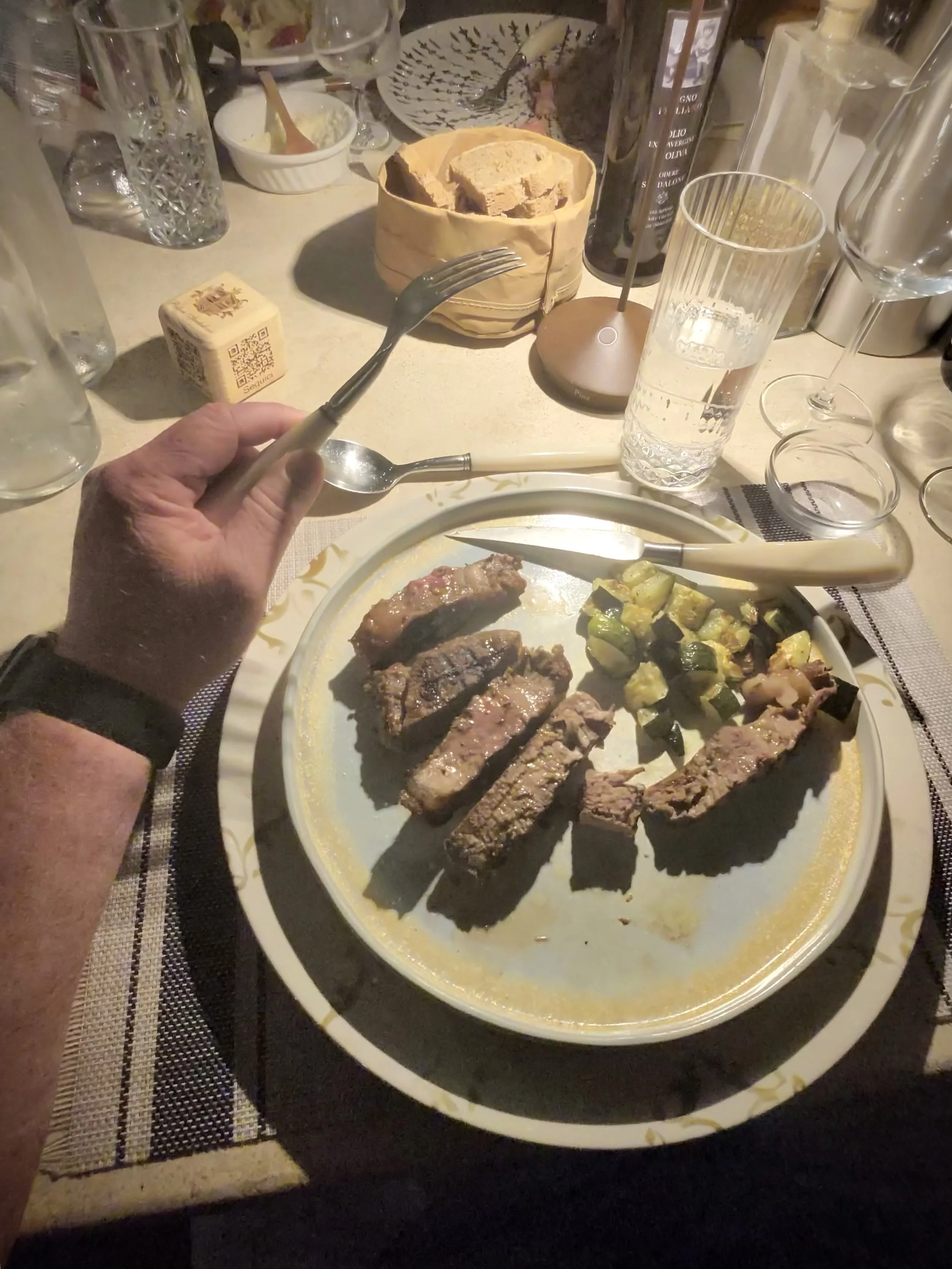When Culture Fails: Lessons from a Tuscan Table Where Guest Experience Was the Cost
What every leader can learn about service, empowerment, and the hidden price of neglecting culture.
Beautiful Tuscan Landscape on a working farm.
Introduction: A Dream Vacation, an Unforgettable Lesson
After 22 years as an entrepreneur-founding and leading both private and public companies-I made the leap to launch my own consulting firm. This summer, for the first time in decades, there were no meetings, no earnings calls, no board meetings, and no litigation preparations. It was just me—husband and dad—fully engaged with my family. We started at a friend’s wedding in Paris, then explored Sicily, Puglia, Tuscany, and finished our journey in Rome. We soaked up culinary adventures and warm hospitality at every stop, creating the kind of memories you hope your child will carry for life. It was a rare moment to reflect: after all those years of leading teams, was I ready for this new chapter?
The Experience: Service Gaps, Lost Opportunities, and a Steak Story
The setting was idyllic, the staff friendly, and breakfast was a delight. But as someone who’s spent decades in hospitality, leading culinary teams and training at the Ritz-Carlton, I couldn’t help but notice the cracks: unkempt planters, dust in the corners, and a general sense that no one was truly “owning” the guest experience.
Dinner service was where the gaps became most apparent. There was one overwhelmed waiter for roughly twenty guests, responsible for everything from running plates to taking drink orders. The result? Guests trying to order a second bottle of wine while the waiter was busy delivering entrees—revenue literally walking out the door because no one was available to take the order. Waters went unfilled, empty plates lingered between courses, and table maintenance was an afterthought. Some guests didn’t receive their first bottle of wine until their entrée had already arrived.
The Steak: When Theater Gets in the Way of Tradition
The signature dish of the night, the Fiorentina steak, arrived with plenty of fanfare: sizzling on a soapstone platter, accompanied by a burning piece of wood and rosemary sprigs for smoke and effect. It was a spectacle—part dinner, part Vegas show, part Chevy’s fajita plate. But beneath the sizzle, the execution missed the mark.
As soon as the steak hit the table, I could see it was already overcooked. Instinctively, I shuffled it off the soapstone and onto my cool plate, trying to halt the cooking process. Still, it was shockingly dry and well past the rare-to-medium-rare doneness that grass-fed Fiorentina demands. Grass-fed beef lacks the marbling of grain-fed cuts; it requires careful handling and is best served rare to medium-rare to showcase its flavor and tenderness. True Fiorentina is all about simplicity—great ingredients, simply prepared, so the quality and care of the farmers and ranchers can be truly appreciated. Instead, the steak was a classic case of A+ concept, C- execution.
Was the waiter too busy running food? Was the timing off? Did the steak sit in the kitchen pickup window, waiting for a break in the chaos? When the waiter finally asked how it was, I simply said, in my best Italian, “troppo cotto.” Overcooked.
The waiter was apologetic and offered a replacement, but it was too late in the evening to wait for another. He genuinely felt bad and, as I lingered outside with a cigar, offered me a glass of grappa. Other guests at the long communal table overheard and wanted one too. The waiter, clearly stretched thin, brought grappas for everyone—except me, the one who’d actually been offered it. It was a small moment but emblematic of a service operation stretched past its limits.
Meanwhile, the owner sat inside with his family, disengaged from the dining room and the experience of his guests. There was no sign of leadership stepping in to help, anticipate needs, or even react when asked for support.
As someone who’s run restaurants, it was stressful to watch. I told my wife I wanted to jump in, run food, clear tables—anything to help. We were supposed to eat there again the next night, but I couldn’t put myself through another evening of watching a team struggle so hard against the odds.
Maybe it was just one bad night. Maybe the 20 steaks a week they say they serve are usually on point. But from what I saw, they were living off the reputation of the previous owners, who seemed to truly understand hospitality. Only time—and consumer feedback on TripAdvisor—will tell. But sadly, as this experience shows, it only takes one night for a guest’s perception to change.
Check-Out: The Final Impression
The last touchpoint of any guest journey is check-out—a moment that can either redeem or cement a guest’s impression. My son and I were loading the suitcases into the car while my wife went to settle the bill. She was surprised to see the full charge for the overcooked steak still on our folio. She raised the issue with the person working the desk, who turned out to be a manager, but even then, he had to ask the owner if he could adjust the bill.
When my wife asked if the owner was aware of the overcooked steak, he immediately replied, “We all know about it.” This made what followed even more disappointing: another missed opportunity for service recovery and leadership. The owner did not LEAP—he didn’t Listen, Empathize, Ask, or Produce a solution with care. Instead, he became argumentative, insisting, “We offered to make you another one and you declined.”
The reality was: it was 10:30 at night, and we didn’t have over an hour to wait for another steak while our seven-year-old needed to get to bed. We actually fed the steak to their dogs, who were wandering around the property.
If the owner truly “knew about it,” a simple, proactive gesture could have changed everything. Even a walk over at breakfast to say, “Hey, I heard about last night. That’s not the norm for us. Sorry about that, we’ve taken it off the bill,” would have turned a service failure into a story of recovery and care. Instead, the owner haggled, ultimately offering to take half the steak price off our bill and justifying it by saying, “If you don’t pay for it, I still have to pay the rancher.” But if they had cooked us a second steak, wouldn’t they be out the cost of two steaks instead of one? Arguing with a guest at check-out is never a good thing. Just LEAP.
The Duty of the Innkeeper: More Than a Business
Hospitality is not just about providing a bed or a meal—it’s about care, anticipation, and stewardship. The “duty of the innkeeper” is as old as the industry itself: to ensure guests are safe, comfortable, and genuinely cared for. If you want to own an agriturismo—or any hospitality business—you need to be present, nurturing, and ready to anticipate or react to your guests’ needs. When that duty is neglected, the entire guest experience is at risk, no matter how beautiful the setting.
The Consultant’s Perspective: What Went Wrong?
If this agriturismo were my client, here’s what I’d see:
Leadership Blind Spots: Ownership was physically present but mentally absent, missing the details that define hospitality.
Broken Culture: Staff were not empowered to resolve guest concerns or make decisions.
Process Gaps: No clear system for guest feedback, no training for handling issues, and no alignment on service standards.
Operational Overload: Staff set up to fail, with no support or backup during peak service.
Lost Revenue: Missed opportunities to upsell or deliver on guest requests due to lack of staff and attention.
This isn’t just a hospitality problem. It’s a culture problem—and it’s one I’ve seen (and helped fix) in organizations of every size.
The Ritz-Carlton Standard: LEAP Into Guest Recovery
Earlier in my career, I was privileged to serve as a corporate trainer and quality coach at The Ritz-Carlton, where I helped lead culinary teams through the rigorous preparations that contributed to the company winning the Malcolm Baldrige National Quality Award—twice. The secret wasn’t just in the recipes; it was in how we treated our guests, especially when things went wrong.
One of my favorite frameworks for guest problem resolution is LEAP:
Listen: Hear the guest’s concern fully, without interruption or defensiveness.
Empathize: Show genuine understanding and care for their experience.
Ask: “What can I do to make this right?”—invite the guest to help shape the solution.
Produce: Take immediate action to resolve the issue, empowered to deliver results.
At Ritz-Carlton, every employee was trusted and empowered to spend up to $2,000 to resolve a guest issue—no questions asked. That level of trust doesn’t just solve problems; it builds a culture where everyone is invested in the guest’s happiness.
How I’d Tackle This as a Consultant
If I were brought in to help this business (or any service-driven organization) recover, here’s my playbook:
1. Leadership Alignment & Vision Reset
Clarify Mission, Vision, and Values: What experience do you want every guest to have? Leadership must model these values daily.
2. Service Standards & Steps of Service
Define What “Great” Looks Like: Document and train on the ideal guest journey, from check-in to check-out.
Role-Play Real Scenarios: Practice problem resolution and guest recovery using real-life examples.
3. Empowerment & Accountability
Empower Frontline Staff: Give staff the authority to resolve issues immediately (even if it’s not $2,000, some empowerment is better than none).
Feedback Loops: Create systems to capture, review, and act on guest feedback.
4. Operational Excellence
Staffing Reviews: Ensure the right people are in the right roles with the right support.
Attention to Detail: Leadership should regularly walk the property with a guest’s eye.
5. Culture of Continuous Improvement
Celebrate Wins, Learn from Misses: Make it safe to discuss mistakes and fix them together.
Ongoing Coaching: Leadership should check in regularly with staff to reinforce standards and provide support.
Closing Reflection: Culture Is the Real Product
Hospitality is a calling, not just a business. When culture and leadership align, even small issues become opportunities to create loyalty and delight. But when they don’t, even the most beautiful setting can’t compensate for a guest experience gone wrong.
If you’re a business owner or leader, ask yourself: Are you empowering your team to deliver on your promise, or are you leaving your guests to the mercy of luck and circumstance? The difference is culture—and it starts at the top.
About the Author
Mark Luciano Ainsworth is President of Luciano Global Ventures Inc., a boutique consulting firm specializing in executive coaching, corporate strategy, and operational excellence. With nearly 30 years’ experience as both a private and public company executive and board member—including co-founding and leading Lowell Farms Inc. (CSE:LOWL; OTCQX:LOWLF) and founding Pastry Smart, the first American Humane Certified and Organic bakery in the U.S.—Mark has built and transformed teams across CPG, hospitality, and cannabis. He has served as Executive Pastry Chef for The Ritz-Carlton Hotel Company and Pebble Beach Company, and as a corporate trainer and quality coach during The Ritz-Carlton’s two Malcolm Baldrige National Quality Award wins. Mark is a member of the Johnson & Wales University College of Food Innovation & Technology (CFIT) Advisory Board. His process-driven, people-focused approach makes him a trusted advisor for organizations seeking to elevate both culture and guest experience.


